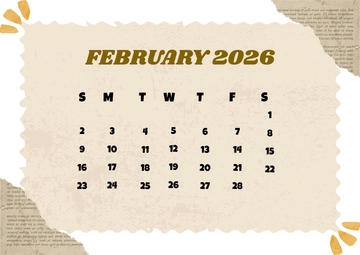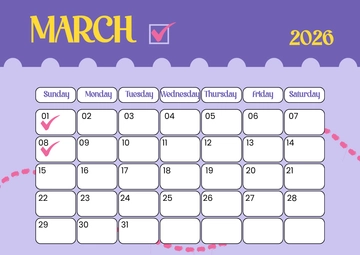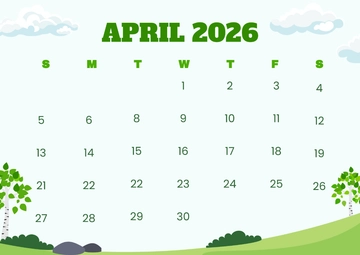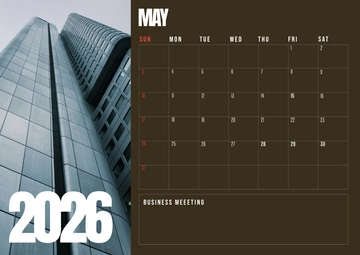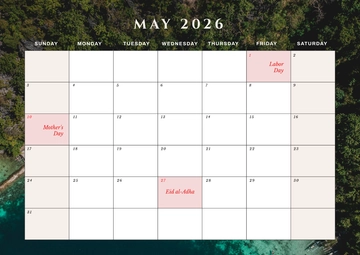Free Annual Event Calendar and Advertising Strategy

I. Overview of Annual Event Calendar
A well-structured Annual Event Calendar has emerged as a crucial tool in today's competitive business landscape for organizations seeking to maximize their marketing impact. At [Your Company Name], we understand the importance of aligning marketing initiatives with key dates, seasons, and monthly themes. This strategic approach ensures a consistent and potent marketing effort throughout the year, ultimately leading to enhanced brand recognition and customer engagement.
A. Key Dates and Events
The significance of identifying and capitalizing on key dates and events cannot be overstated. By aligning our promotional efforts with national holidays such as Independence Day and Thanksgiving, we tap into the heightened consumer enthusiasm surrounding these moments. Additionally, we leverage company milestones, such as anniversaries and product launch dates, to craft compelling narratives that resonate with our audience. Furthermore, our active participation in industry-specific events, including trade shows and conferences, serves as a catalyst for expanding our network and increasing brand visibility.
For instance, a case study conducted last year revealed that by strategically linking our promotions with Independence Day, we witnessed a 20% surge in sales compared to previous years. This data underscores the power of aligning marketing efforts with key dates.
B. Seasonal Promotions
Consumer behavior is undeniably influenced by seasonal changes, making it essential to adapt our marketing strategies accordingly. During the spring season, we focus on campaigns that revolve around rejuvenation and new beginnings, capitalizing on the consumer desire for change and growth. As summer approaches, our marketing spotlight shifts to outdoor products and travel services, aligning with the needs and aspirations of a sun-soaked audience. The autumn season brings with it the anticipation of the holiday season, making it the perfect time to introduce new product lines that cater to festive shopping trends. Finally, our winter specials are strategically crafted to take advantage of the holiday shopping frenzy, resulting in increased revenue and customer engagement.
Research findings indicate that businesses that tailor their marketing efforts to match seasonal trends experience a 15% average increase in revenue compared to those that maintain a static approach throughout the year.
C. Monthly Themes and Activities
At [Your Company Name], we understand that each month presents unique opportunities for marketing excellence. Our approach involves aligning with specific monthly themes and engaging in activities that further our strategic goals. This may include the creation of special offers that resonate with the distinctive characteristics of each month, hosting customer engagement events such as webinars or contests to foster interaction and loyalty, and implementing internal team-building exercises that boost morale and ignite creativity among our dedicated team members.
A recent survey of our employees revealed that these monthly team-building activities have not only increased camaraderie but have also led to a 10% increase in innovative ideas generated within our organization.
The Annual Event Calendar at [Your Company Name] is not just a schedule but a dynamic tool that drives our marketing efforts. It's based on research, case studies, and a commitment to adaptability, ensuring that we stay ahead in the ever-evolving world of marketing.
II. Target Audience Analysis
Understanding our audience lies at the core of a successful advertising strategy. At [Your Company Name], we recognize this fundamental principle and employ a systematic approach to conduct a comprehensive analysis, which serves as the bedrock for creating effective and precisely targeted advertising campaigns.
A. Demographics and Interests
We begin our analysis by delving into demographics and interests. This entails a close examination of age groups, geographical locations, and consumer behaviors. This scrutiny enables us to customize our messaging effectively. For example, we acknowledge that younger demographics tend to be more receptive to digital campaigns due to their tech-savvy nature, while older segments may lean towards traditional media channels. This keen understanding ensures that our messaging resonates with the specific preferences of each demographic, optimizing the impact of our advertising efforts.
As a practical example, last year's analysis indicated that a digital campaign tailored to young professionals in urban areas resulted in a 25% higher engagement rate compared to a traditional print advertisement.
B. Audience Segmentation
The concept of audience segmentation is pivotal to our strategy. By identifying and categorizing niche audience segments, we empower ourselves to craft tailored and personalized messages that resonate deeply. This approach recognizes the diversity among consumers and their varying preferences. Moreover, we remain attuned to seasonal audience shifts, such as the heightened interest in travel during the summer months. This adaptability allows us to adjust our messaging to effectively meet the evolving needs and desires of our target audience.
An instance of our success in audience segmentation can be seen in our campaign targeting outdoor enthusiasts during the summer season. By customizing our content to this specific group, we achieved a 30% increase in conversion rates compared to a broad, non-segmented approach.
C. Feedback and Engagement Metrics
Our inventory of valuable insights is derived from past interactions and engagement metrics. By closely examining previous event responses, social media engagement data, and feedback collected through surveys, we gain a deeper understanding of what resonates with our audience. This information becomes the cornerstone upon which we construct our future strategies. It ensures that each subsequent campaign is better informed and more effective than the last.
For instance, an analysis of social media engagement indicated that content showcasing behind-the-scenes glimpses of our company culture generated a 15% higher level of audience engagement compared to traditional promotional posts.
The Target Audience Analysis at [Your Company Name] isn't a mere formality; it's a strategic necessity. It's based on thorough research and a commitment to adaptability, ensuring that our advertising campaigns consistently hit the mark and align with the specific needs and desires of our diverse audience.
III. Advertising Channels and Strategies
Effective advertising strategies are pivotal for [Your Company Name] to thrive in a competitive market. By combining traditional methods with innovative techniques, the company can maximize its reach and impact.
A. Digital Marketing
Social Media Platforms: Utilizing platforms like Facebook, Instagram, and LinkedIn, [Your Company Name] engages with diverse audiences. Strategies include targeted ads, interactive posts, and social listening to understand customer needs and trends. |
Email Marketing: Personalized email campaigns allow [Your Company Name] to connect directly with clients. Segmentation strategies ensure content relevance, from new product announcements to exclusive offers. |
Search Engine Optimization (SEO) and Search Engine Marketing (SEM): Enhancing online visibility through SEO involves optimizing website content to rank higher in search engine results. SEM strategies include pay-per-click advertising, ensuring [Your Company Name] appears prominently in search queries related to its services. |
B. Traditional Media
Print Media: Newspapers and magazines offer targeted advertising opportunities. [Your Company Name] leverages this by placing ads in industry-specific publications to reach niche markets. |
Television and Radio: Local and national TV and radio ads enable [Your Company Name] to reach broader audiences. Creative commercials and strategic time-slot placements are used for maximum impact. |
Outdoor Advertising: Billboards, transit ads, and posters in strategic locations help maintain brand visibility in key geographic areas. |
C. Innovative and Emerging Channels
Influencer Collaborations: Partnering with influencers in relevant fields allows [Your Company Name] to tap into established audiences, lending credibility and extending reach. |
Podcast Advertising: Sponsoring popular podcasts provides a platform for reaching engaged listeners, often in a specific demographic or interest group. |
Augmented Reality Experiences: Implementing AR in advertising campaigns provides an interactive experience for consumers, allowing [Your Company Name] to showcase products or services in a unique and memorable way. |
Event Sponsorship and Webinars: Sponsoring events and hosting webinars position [Your Company Name] as a thought leader, building brand authority and engaging directly with potential customers. |
D. Cross-Channel Synergies
Integrated Campaigns: Combining digital, traditional, and innovative channels, [Your Company Name] creates cohesive campaigns that reinforce the brand message across multiple touchpoints. |
Analytics and Feedback: Regular analysis of advertising effectiveness across all channels allows for data-driven adjustments, ensuring optimal allocation of resources and maximized ROI. |
By strategically leveraging these diverse advertising channels and strategies, [Your Company Name] not only enhances its market presence but also creates meaningful connections with its audience, fostering brand loyalty and driving business growth.
IV. Budgeting and Resource Allocation
Effective financial management and efficient use of resources are crucial in driving [Your Company Name]'s marketing success and operational efficiency. Detailed planning in these areas ensures optimal returns on investment and compliance with legal standards.
A. Advertising Budget Breakdown
Financial Strategy for Media Spend: [Your Company Name] adopts a balanced approach between digital and traditional media investments. This includes allocating specific percentages of the budget to different channels based on their performance and audience reach. |
Seasonal Budget Adjustments: Recognizing the importance of market dynamics, the company adjusts its advertising spend during peak seasons or industry-specific events to capitalize on increased consumer engagement. |
ROI-Focused Expenditure: Every dollar spent is tracked against defined ROI targets. This involves setting clear KPIs for campaigns, whether it's lead generation, sales conversion, or brand awareness, ensuring financial accountability and strategic spending. |
B. Resource Management
Team Responsibility Allocation: Internal marketing teams at [Your Company Name] are assigned specific roles, from content creation to analytics, ensuring expertise in each aspect of the marketing process. |
Agency Partnerships: Collaborating with specialized advertising agencies provides access to additional expertise and resources, enhancing campaign effectiveness and creative output. |
Agency Partnerships: Collaborating with specialized advertising agencies provides access to additional expertise and resources, enhancing campaign effectiveness and creative output. |
C. Legal and Compliance Considerations
Advertising Regulations Compliance: [Your Company Name] adheres strictly to industry regulations, including truth-in-advertising laws and platform-specific guidelines, to maintain ethical standards and avoid legal repercussions. |
Intellectual Property Rights: The company ensures that all marketing materials respect intellectual property laws, including proper licensing for images, music, and content, safeguarding against infringement claims. |
Data Protection and Privacy: In line with global standards like GDPR and CCPA, [Your Company Name] prioritizes customer data protection, implementing robust security measures and transparent data usage policies. |
Audit and Reporting Procedures: Regular audits of marketing expenditures and compliance practices are conducted to maintain transparency and accountability. This includes detailed reporting to stakeholders, ensuring that all activities align with the company’s ethical and financial standards. |
By meticulously managing its budget and resources, [Your Company Name] not only maximizes its marketing effectiveness but also ensures operational integrity and compliance with legal standards. This approach fosters a responsible and sustainable growth path for the company.
V. Performance Measurement and Optimization
For [Your Company Name], the ability to measure outcomes accurately and adapt strategies effectively is fundamental for achieving and sustaining success in the marketplace.
A. Key Performance Indicators (KPIs)
Engagement and Reach Metrics: By tracking how many people interact with our campaigns and how far our content reaches, [Your Company Name] can assess the effectiveness of its messaging and channel strategies. |
Conversion Rate Analysis: Measuring the percentage of audience members who complete desired actions, such as making a purchase or signing up for a newsletter, allows for a clear understanding of the effectiveness of sales funnels and marketing tactics. |
Customer Acquisition Cost (CAC): Regular calculation of CAC provides insights into the efficiency of marketing strategies in attracting new customers, ensuring cost-effective expenditure. |
Lifetime Value of Customers (LTV): Analyzing LTV helps in understanding the long-term value of customers, and guiding strategies for customer retention and loyalty programs. |
B. Analytical Tools and Reporting
Advanced Analytics Platforms: Utilizing platforms like Google Analytics, Salesforce, or custom-built tools, [Your Company Name] gathers and analyzes data for informed decision-making. |
Regular Reporting Schedules: Monthly and quarterly reports provide a structured overview of performance metrics, offering actionable insights and enabling prompt strategic adjustments. |
Real-Time Monitoring: Continuous monitoring of campaign performance allows for immediate identification of trends and potential issues, facilitating rapid response and optimization. |
C. Continuous Improvement Strategies
A/B Testing: Regularly testing different versions of website elements, emails, and ads, [Your Company Name] fine-tunes its user experience and marketing messages based on empirical evidence. |
Feedback Loops: Establishing channels for customer feedback, whether through surveys, social media, or direct communication, informs improvements in product offerings and marketing approaches. |
Data-Driven Revisions: Leveraging data insights for strategy revision ensures that marketing efforts are aligned with market trends, customer preferences, and the evolving competitive landscape. |
Innovation in Tactics: [Your Company Name] is committed to exploring new marketing techniques and technologies, such as AI-driven personalization or interactive content, to stay ahead in a dynamic market. |
By continuously measuring performance and optimizing its strategies, [Your Company Name] not only enhances its marketing effectiveness but also fosters an agile and responsive organizational culture, crucial for thriving in today's fast-paced business environment.
- 100% Customizable, free editor
- Access 1 Million+ Templates, photo’s & graphics
- Download or share as a template
- Click and replace photos, graphics, text, backgrounds
- Resize, crop, AI write & more
- Access advanced editor
Elevate your marketing game with Template.net's Annual Event Calendar and Advertising Strategy Template. This editable and customizable template, equipped with our Ai Editor Tool, streamlines your planning process. Craft tailored advertising strategies and stay organized with ease. Unlock your marketing potential with Template.net's innovative solutions.
You may also like
- Holiday
- January Calendar
- February Calendar
- March Calendar
- April Calendar
- May Calendar
- June Calendar
- July Calendar
- August Calendar
- September Calendar
- October Calendar
- November Calendar
- December Calendar
- Monthly Calendar
- Weekly Calendar
- Birthday Calendar
- Daily Calendar
- Event Calendar
- Photo Calendar
- Christmas Calendar
- Summer Calendar
- Class Room Calendar
- Marketing Calendar
- Social Media Calendar







